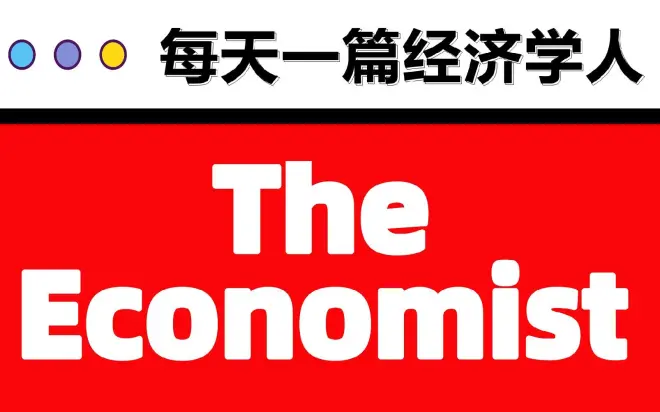每天一篇经济学人 | Medical technology 医疗技术(20...

If you cut yourself, your options are to reach for a plaster or, if the cut is nasty, to go to a doctor to have it stitched or glued. That seems a rather limited choice. Medical researchers have been trying to develop another way to join the edges of a wound, inspired by something routinely done to gas pipes and electronics: soldering.
如果你割伤了自己,你的选择是拿膏药,或者,如果伤口很严重,去找医生缝合或粘合。这似乎是一个相当有限的选择。医学研究人员一直在尝试开发另一种连接伤口边缘的方法,其灵感来自于天然气管道和电子产品的常规做法:钎焊。
And an innovation developed at the Swiss Federal Institute of Technology (ETH) in Zurich, in co-operation with the Swiss materials science institute Empa, suggests this might soon become a practical reality. In soldering, an intermediate material is heated until it melts and bonds with the two surfaces that are to be joined. The material of these edges has a higher melting point and remains solid (otherwise it would count as welding).
位于苏黎世的瑞士联邦理工学院(ETH)与瑞士材料科学研究所Empa合作研发的一项新方法表明,这可能很快成为现实。在钎焊过程中,中间材料被加热,直到它融化并与要连接的两个表面结合。这些边缘的材料具有较高的熔点,并保持固态(否则将算作焊接)。
For tissue, the intermediate material is not a metal alloy, but a paste of biocompatible material, such as albumin, a protein that is an important constituent of blood. When heated, the paste develops chemical bonds with living tissue on both sides. As healing progresses, the two sides reconnect and the paste is removed by the body's natural cleaning procedures.
对于组织来说,中间材料不是金属合金,而是一种生物相容性材料的糊状物,比如白蛋白,一种血液的重要组成部分。当加热时,糊状物与两侧的活组织形成化学键。随着愈合的进展,两侧重新连接,通过身体的自然清洁程序将糊状物移除。
Closing wounds by soldering has several important advantages, says Oscar Cipolato, a PHD candidate at ETH, who presented preliminary results on April 5th at the Photonics Europe conference in Strasburg, France. The bond it produces is strong and watertight, something that cannot be guaranteed with stitches. If a wound is internal—after surgery, for instance—a leak could cause an infection.
4月5日,在法国斯特拉斯堡举行的欧洲光子会议上,ETH的博士候选人Oscar Cipolato展示了初步结果,他说,通过钎焊来缝合伤口有几个重要的优势。它产生的粘合剂是坚固和防水的,这是不能通过缝线来保证的。如果伤口是内部的——比如手术后的伤口——渗漏可能会导致感染。
But soldering tissue has turned out to be difficult in practice, which means it is not commonly done. Heating the soldering paste is done by shining a laser onto it, from which the paste absorbs energy. But controlling the heating precisely is tricky. The paste needs to reach about 80°c to work. If the temperature is too low, the soldering material will not fully melt and the bond will be weak. But if it is too high, it risks burning the surrounding tissue.
但是焊接组织在实践中被证明是困难的,这意味着它不是通常做的。加热焊接膏是通过激光照射它,从它吸收能量。但精确控制加热是很棘手的。膏体需要达到大约80°c才能工作。如果温度过低,焊锡料就不会充分熔化,粘结也会薄弱。但如果剂量过高,就有灼伤周围组织的风险。
Existing attempts at wound-soldering rely on thermal imaging to measure temperature. But that only measures the temperature at the surface of the solder, rather than throughout the material. Mr Cipolato and Inge Herrmann, a chemical engineer at ETH, hope their improved paste can get around such problems. It is made up of two kinds of nano-particles, specks of material of only about 20 billionths of a metre across.
现有的绕焊尝试依赖于热成像来测量温度。但它只测量了焊料表面的温度,而不是整个材料的温度。Cipolato先生和ETH的化学工程师Inge Herrmann希望他们改良后的糊状物能解决这些问题。它是由两种纳米粒子组成的,它们是直径仅为200亿分之一米的物质微粒。
between them, these help direct the energy of the laser to the places it should be, and help doctors gauge the conditions in the paste. The first set of particles are made of titanium nitrate. They eagerly absorb photons of red or near infrared light, precisely the colours that most easily penetrate living tissue, and release the energy as heat to their surroundings.
在它们之间,这些帮助引导激光的能量到它应该在的地方,并帮助医生测量膏状物的条件。第一组微粒是由硝酸钛制成的。它们急切地吸收红色或近红外光的光子,正是最容易穿透活组织的颜色,并将能量以热的形式释放到周围环境。
That efficient absorption means the paste can be heated by a relatively weak laser beam, which helps protect the surrounding tissues. Using such tiny particles is in itself not new. But until recently most researchers used tiny rods of gold, which are expensive. Nanoparticles of titanium nitrate, on the other hand, are easily and cheaply produced by spraying the right mix of precursor chemicals into a flame. The second set of particles are a new development in the soldering world.
这种有效的吸收意味着这种膏体可以用相对微弱的激光束加热,这有助于保护周围的组织。使用如此微小的粒子本身并不是什么新鲜事。但直到最近,大多数研究人员使用的都是昂贵的小金条。另一方面,通过向火焰中喷洒合适的前体化学物质混合物,硝酸钛纳米颗粒的生产很容易,成本也很低。第二组粒子是焊接界的新发展。
They are specks of a material which fluoresces. In other words, it absorbs the laser light, but immediately re-emits the energy as light again, at a few very specific wavelengths. Two of these wavelengths are also in the infrared and red colour range. That allows some of the re-emitted light to emerge from the paste to where it can be analysed by an external instrument called a spectrometer.
它们是一种能发出荧光的物质的斑点。换句话说,它吸收了激光,但立即将能量以光的形式重新发射出来,只是波长非常特定。其中两种波长也在红外和红色范围内。这使得一些重新发射的光能够从浆糊中显现出来,并被一种叫做分光仪的外部仪器分析。
By precisely measuring the difference between the two wavelengths, the temperature of particles that are emitting it—and thus of the paste as a whole—can be worked out. Thus far, the researchers have tested the technique only on pieces of pig intestine that they obtained from a slaughterhouse. Soldering a cut is done in a matter of minutes.
通过精确测量两种波长之间的差值,发射粒子的温度就可以计算出来——因此整个粒子的温度就可以计算出来。到目前为止,研究人员只在屠宰场获得的猪小肠上测试了这项技术。焊接切口只需几分钟。
Similar “ex vivo” tests of the strength and permeability of the bond will also be needed for human tissue, followed by clinical tests on actual pigs and, eventually, humans. But the researchers are optimistic. At the conference, they were cagey about exactly what the fluorescing particles are made of. They are applying for a patent, which could be quite valuable if the tools at the ready in a doctor’s office one day include a laser soldering gun.
人体组织也需要进行类似的结合强度和渗透性的“体外”测试,然后在猪身上进行临床测试,最终在人身上进行。但研究人员对此持乐观态度。在这次会议上,他们对荧光粒子的构成讳言甚少。他们正在申请一项专利,如果有一天医生办公室里准备好的工具包括激光焊接枪,那么这项专利将非常有价值。

